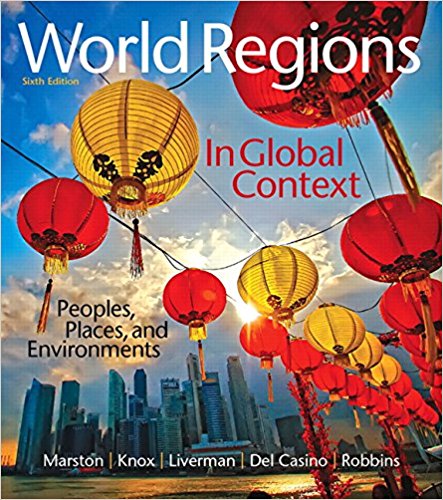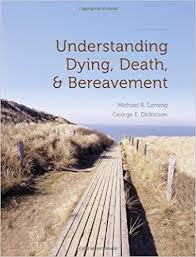World Regions in Global Context, Peoples Places and Environments 6th Edition Test Bank
Original price was: $55.00.$22.00Current price is: $22.00.
Digital item No Waiting Time Instant Download
ISBN-13: 9780134857190 ISBN-13: 9780134153681
Published by Pearson (December 13th, 2017
Author: Sallie Marston, Paul Knox, Diana Liverman,
Vincent Del Casino Jr., Paul Robbins (Author)
Description
World Regions in Global Context, Peoples Places and Environments 6th Edition Test Bank
1. World Regions in Global Context
2. Europe
3. The Russian Federation, Central Asia, and the Transcaucasus
4. Middle East and North Africa
5. Sub-Saharan Africa
6. The United States and Canada
7. Latin America
8. East Asia
9. South Asia
10. Southeast Asia
11. Oceania
World Regions in Global Context, 6e (Marston)
Chapter 2 Europe
1) By 2050, the ratio of workers to retirees in Europe is expected to be:
A) 4:1
B) 3:1
C) 2:1
D) 1:1
E) none of these
Answer: C
Diff: 1
Section: Culture and Populations
Geog. Standard: N12 The processes, patterns, and functions of human settlement
Bloom’s Taxonomy: Remembering/Understanding
Global Sci Out: G2 Demonstrate the ability to think critically and employ critical thinking skills.
Learning Obj: 2.28 Analyze the demographic factors that have affected population growth rates in Europe, including baby booms and busts.
2) Which of the following is the largest of the European peninsulas?
A) Balkan Peninsula
B) Iberian Peninsula
C) Italian Peninsula
D) Scandinavian Peninsula
E) none of these
Answer: D
Diff: 1
Section: Environment, Society, and Sustainability
Geog. Standard: N4 The physical and human characteristics of places
Bloom’s Taxonomy: Applying/Analyzing
Global Sci Out: G3 Read and interpret graphs and data.
Learning Obj: 2.1 Describe the physical geography of Europe in terms of its major landmasses, landforms, rivers and watersheds, and surrounding seas.
3) The Pyrenees Mountains designate the border between France and:
A) Spain
B) Italy
C) Germany
D) Belgium
E) Switzerland
Answer: A
Diff: 1
Section: Environment, Society, and Sustainability
Geog. Standard: N4 The physical and human characteristics of places
Bloom’s Taxonomy: Remembering/Understanding
Global Sci Out: G2 Demonstrate the ability to think critically and employ critical thinking skills.
Learning Obj: 2.1 Describe the physical geography of Europe in terms of its major landmasses, landforms, rivers and watersheds, and surrounding seas.
4) After World War II, this German city was divided between two countries, one under democratic rule, the other under Communist rule.
A) Bonn
B) Dortmund
C) Berlin
D) Amsterdam
E) Munich
Answer: C
Diff: 1
Section: Environment, Society, and Sustainability
Geog. Standard: N13 How the forces of cooperation and conflict among people influence the division and control of Earth’s surface
Bloom’s Taxonomy: Remembering/Understanding
Global Sci Out: G2 Demonstrate the ability to think critically and employ critical thinking skills.
Learning Obj: 2.13 Discuss the rise and fall of state socialism in Eastern Europe and Eastern Europe’s reintegration.
5) This physiographic region has many important coalfields within Europe.
A) Northwestern Uplands
B) Alpine System
C) Central Plateaus
D) North European Lowlands
E) Mediterranean basin
Answer: C
Diff: 2
Section: Environment, Society, and Sustainability
Geog. Standard: N4 The physical and human characteristics of places
Bloom’s Taxonomy: Remembering/Understanding
Global Sci Out: G2 Demonstrate the ability to think critically and employ critical thinking skills.
Learning Obj: 2.5 Describe Europe’s physiographic regions in terms of their natural and cultural landscapes.
6) What bowl-shaped basins are part of glaciated landscapes in the Northwestern Uplands?
A) fjord
B) cirque
C) moraine
D) glaciated valley
E) glacial delta
Answer: B
Diff: 3
Section: Environment, Society, and Sustainability
Geog. Standard: N8 The characteristics and spatial distribution of ecosystems and biomes of Earth’s surface
Bloom’s Taxonomy: Remembering/Understanding
Global Sci Out: G2 Demonstrate the ability to think critically and employ critical thinking skills.
Learning Obj: 2.5 Describe Europe’s physiographic regions in terms of their natural and cultural landscapes.
7) Which of the following is not true about the Alps?
A) older than 500 million years
B) source of hydroelectric power
C) substantial agricultural economy
D) source of limestone, lead and copper
E) none of the above
Answer: A
Diff: 2
Section: Environment, Society, and Sustainability
Geog. Standard: N4 The physical and human characteristics of places
Bloom’s Taxonomy: Remembering/Understanding
Global Sci Out: G2 Demonstrate the ability to think critically and employ critical thinking skills.
Learning Obj: 2.1 Describe the physical geography of Europe in terms of its major landmasses, landforms, rivers and watersheds, and surrounding seas.
8) Which country first developed polder landscape techniques?
A) Switzerland
B) France
C) United Kingdom
D) Netherlands
E) Italy
Answer: D
Diff: 3
Section: Environment, Society, and Sustainability
Geog. Standard: N14 How human actions modify the physical environment
Bloom’s Taxonomy: Remembering/Understanding
Global Sci Out: G5 Demonstrate an understanding of the impact of science on society.
Learning Obj: 2.6 Summarize the steps in the transformation of Europe’s ecosystems and human-influenced landscapes from prehistory through modern times.
9) What is a compact chain of mountains separate from other ranges?
A) loess
B) heathland
C) massif
D) meseta
E) fjords
Answer: C
Diff: 3
Section: Environment, Society, and Sustainability
Geog. Standard: N8 The characteristics and spatial distribution of ecosystems and biomes of Earth’s surface
Bloom’s Taxonomy: Remembering/Understanding
Global Sci Out: G2 Demonstrate the ability to think critically and employ critical thinking skills.
Learning Obj: 2.1 Describe the physical geography of Europe in terms of its major landmasses, landforms, rivers and watersheds, and surrounding seas.
10) At the end of the medieval period, how much of Europe was covered in forest?
A) 35%
B) 75%
C) 20%
D) 50%
E) 5%
Answer: C
Diff: 3
Section: Environment, Society, and Sustainability
Geog. Standard: N8 The characteristics and spatial distribution of ecosystems and biomes of Earth’s surface
Bloom’s Taxonomy: Remembering/Understanding
Global Sci Out: G2 Demonstrate the ability to think critically and employ critical thinking skills.
Learning Obj: 2.6 Summarize the steps in the transformation of Europe’s ecosystems and human-influenced landscapes from prehistory through modern times.
11) What mountain range is sometimes used to mark the boundary between Europe and Asia?
A) Alps
B) Carpathians
C) Urals
D) Pyrenees
E) Apennines
Answer: C
Diff: 3
Section: Environment, Society, and Sustainability
Geog. Standard: N4 The physical and human characteristics of places
Bloom’s Taxonomy: Remembering/Understanding
Global Sci Out: G2 Demonstrate the ability to think critically and employ critical thinking skills.





Be the first to review “World Regions in Global Context, Peoples Places and Environments 6th Edition Test Bank”